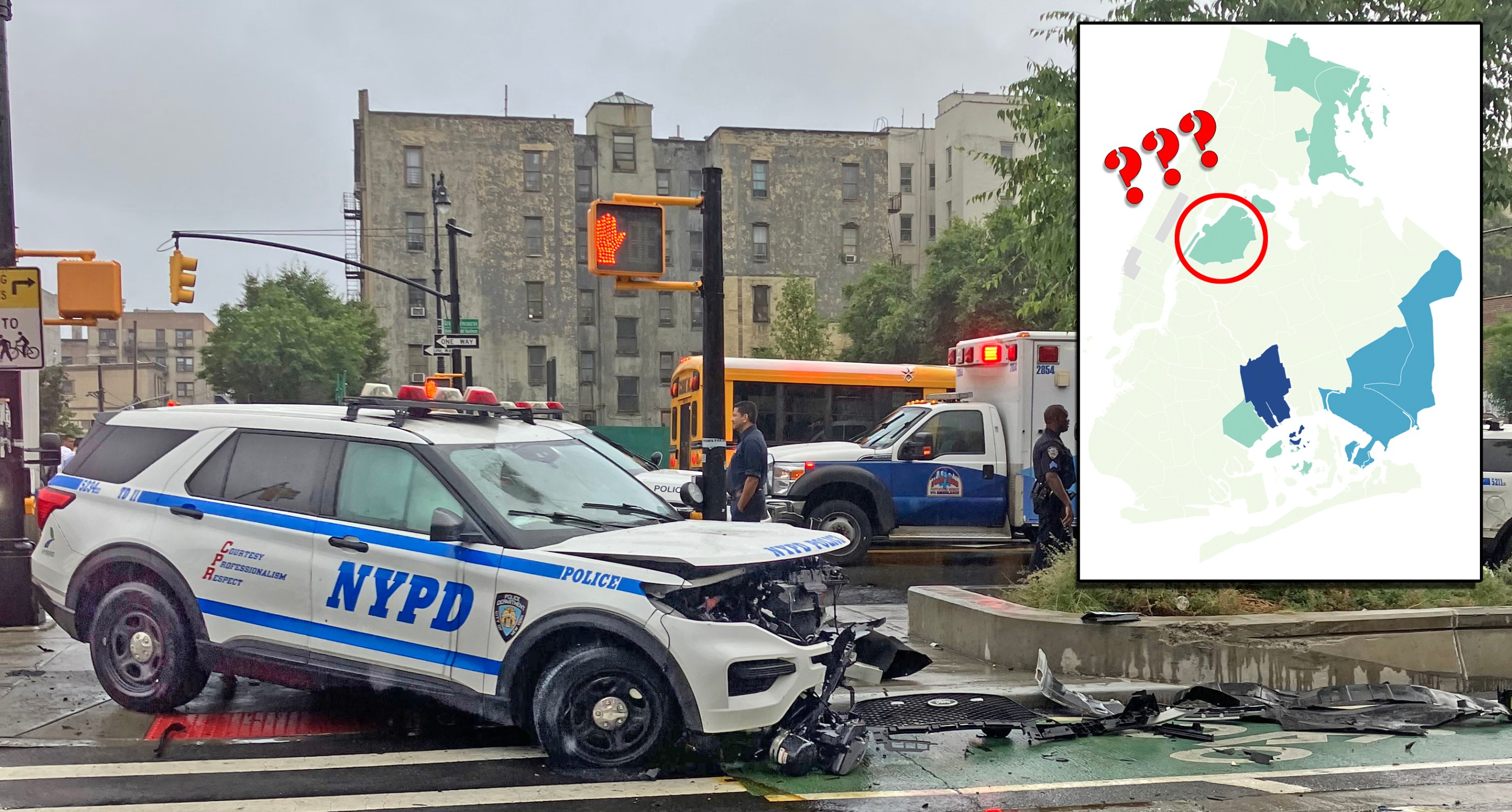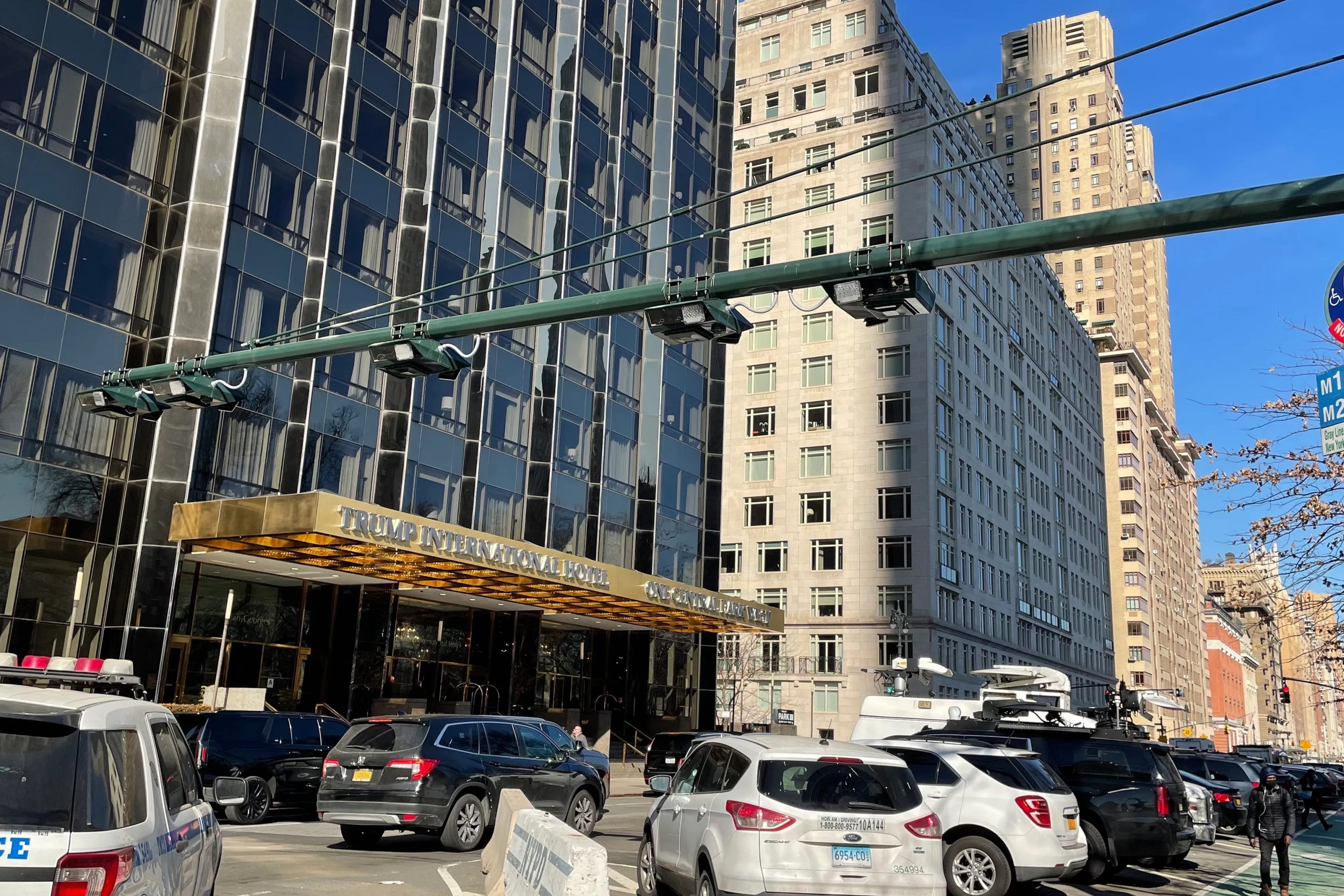It's an epidemic of recklessness — by Mayor Adams's cops.
Despite years of community outrage, officers at the 114th Precinct in Astoria have drastically increased their use of controversial high-speed chases through the neighborhood's residential streets — a practice that culminated in the killing of a cyclist by a scofflaw fleeing police last week.
"It’s very frustrating to lay this all out for them and still have a horrible death happen," said Alex Duncan, known on Reddit as “Miser,”an Astoria resident and founder of the pro-street safety subreddit, r/micromobilityNYC.
From Jan. 1 through Sept. 30, 2024, cops from the 114th Precinct engaged in 38 high-speed chases on residential streets, a practice so dangerous that it is tightly regulated by police brass. Nonetheless, cops in the mostly-tranquil neighborhood conducted the sixth most chases out of the city's 77 precincts over that period — and a glance at the map of chases citywide reveals just what an outlier the 114 is.
In addition, the number of chases is soaring in the quiet and relatively safe precinct:
A community concerned
Since February 2023, when a reckless SUV driver killed 7-year-old Dolma Naadhun in Astoria, members of r/micromobilityNYC have been showing up to monthly 114th Precinct Community Council to advocate for safer streets.
At a September 2023 meeting, one resident asked officers to address a reckless chase video through the streets of Astoria that went viral — one of the many chases that have occurred since Mayor Adams took office and chases increased 600 percent citywide.
Deputy Inspector Kenneth Gorman, then the precinct's Commanding Officer, responded that he emphatically agreed, telling the group that “car chases are always a matter of balancing risk and reward,” adding that it’s “usually too dangerous to chase people through highly populated areas at high speeds.”
Nevertheless, they persisted.
In July, cops from the 114th were chasing an alleged stolen car, whose driver then hit and critically injured a female cyclist on Crescent Avenue.
So at this September’s community council meeting, a resident again brought up the concern about the increase in chases. This time, the traffic safety assistant, who gave only the name Captain Walls, said official policy is to only chase when the suspect “poses a greater threat to public safety than the chase would.”
Duncan thinks that instructions by the top brass are not trickling down to the rank and file officers engaging in the chases.
"The heads of these departments say, ‘You can’t race through a residential neighborhood where there’s people on every street and bikes, obviously that’s going to kill someone.’ But in the real world, that message doesn’t get relayed to the rank and file," said Duncan.
To chase, or not to chase
When exactly is the NYPD supposed to engage in a high-speed chase?
According to the NYPD patrol guide, pursuits “must be terminated when the danger to the public outweighs the benefits of apprehending the perpetrator,” and that officers should use tactics that reduce the likelihood of pursuits.
The top consideration officers must make is whether the "nature of offense" warrants "commencing and continuing a vehicle pursuit," according to a patrol guide obtained by Streetsblog. Other considerations include (in order), the time of day, the weather, the local population density, the NYPD vehicle's "capability" to catch the fleeing car and the officers' "familiarity with area."
The public isn't made clear about those rules. As Streetsblog reported last year, the NYPD mysteriously removed section 221-15 — the four-pages related to vehicle pursuits — from the patrol guide just as the number of high-speed chases were starting to increase at alarming rates.
The section of the patrol guide is still missing from the publicly available version.
Servedio's killing appears to be a violation of department protocols. Just before 11 p.m., officers responded to a 911 call of a burglary in progress at a construction site on Crescent Street. When police arrived, three masked men got into a black Dodge Ram with obstructed plates and sped off, smashing into two cop cruisers, police said. The officers then made the decision to chase, and at the nearby corner of 34th Avenue and 37th Street, the fleeing suspect ran a red light and slammed in Servedio, who was riding her bike on her way home from a social outing with other cyclists.
Activists were horrified to learn that the cops were chasing a suspected burglar.
"Amanda’s life should've been worth more than whatever the suspect took," said Laura Shepard, an activist with Transportation Alternatives. "This shouldn’t have to be what happens to get change."
A report by the Commission to Combat Police Corruption released last year recommended stiffer punishment for officers who engage in reckless chases that cause harm to people or property.
But according to the oversight group’s most recent report, the NYPD has not enacted the recommendations.
A known threat to safety
The driver who killed Servedio was piloting a car with more than 80 speed- and red-light camera violations — including 44 of those so far this year, according to city records accessible via How's My Driving.
So why was he still on the road? Why was his license not suspended? Why was his car not seized?
The answer to all those questions is because there is no mechanism for doing any of those things: Camera-issued tickets do not count on a driver's record. And if the driver keeps paying the $50 tickets — couch-cushion money to some offenders — there is no way for the city to seize the car.
There was once a small program to try to rein in the very worst offenders; under the Dangerous Vehicle Abatement Program, the Department of Transportation was authorized to require drivers with 15 speed-camera or five red-light tickets in any 12-month period to attend a safety course.
But the City Council and the Adams administration allowed it to expire without being reauthorized or bolstered.
Then-Council Member Brad Lander, who drafted the law that created the program, originally wanted the city to seize the cars of the worst offenders, but the de Blasio administration watered it down. And in the end, very few drivers ever took the course — and even fewer became safer drivers anyway.
Still, Lander defended his intention and the program, which at least brought the worst offenders into a classroom.
“Amanda Servedio might still be alive today if the city hadn’t permitted the Dangerous Vehicle Abatement Program to expire," Lander, who is now the Comptroller, told Streetsblog. "Drivers who are repeatedly caught by speed and red-light cameras currently face no consequences other than a fine in the mail. Repeat reckless drivers must be held to account if our city truly wants to easily prevent deaths by traffic crashes and achieve Vision Zero.”
Drivers with stacks of automated enforcement tickets kill and kill again. Nothing has changed, for example, since a driver with a similar record to Servedio's killer mowed down 3-month-old Apolline Mong-Guillemin during a police chase.
Looking ahead
Will anything change? On Wednesday, just a day after Servedio's death, Gov. Hochul signed the expansion of the city's red-light camera program — but all that means is that there will be more $50 tickets mailed to reckless drivers. If they keep paying, they keep driving.
The DOT said it supports a state bill, introduced by Sen. Michael Gianaris (D- Queens) that would suspend, for six months, the registration on any car slapped with five tickets in a year, drastically raising the consequences for scofflaws like the one that killed Servedio.
"Do we need any more evidence of the need for this bill then what just happened?" Gianaris told Streetsblog. "We know that the worst offenders are repeat offenders, there's no reason not to impose punishment that could save lives."
The bills, however, are still stalled in the state legislature — and activists are tired of waiting.
"We're 'sharing' the roads with drivers who shouldn't be there, who have demonstrated that the safety of other road users is not a concern for them," said Shepard.
The NYPD declined to comment.






